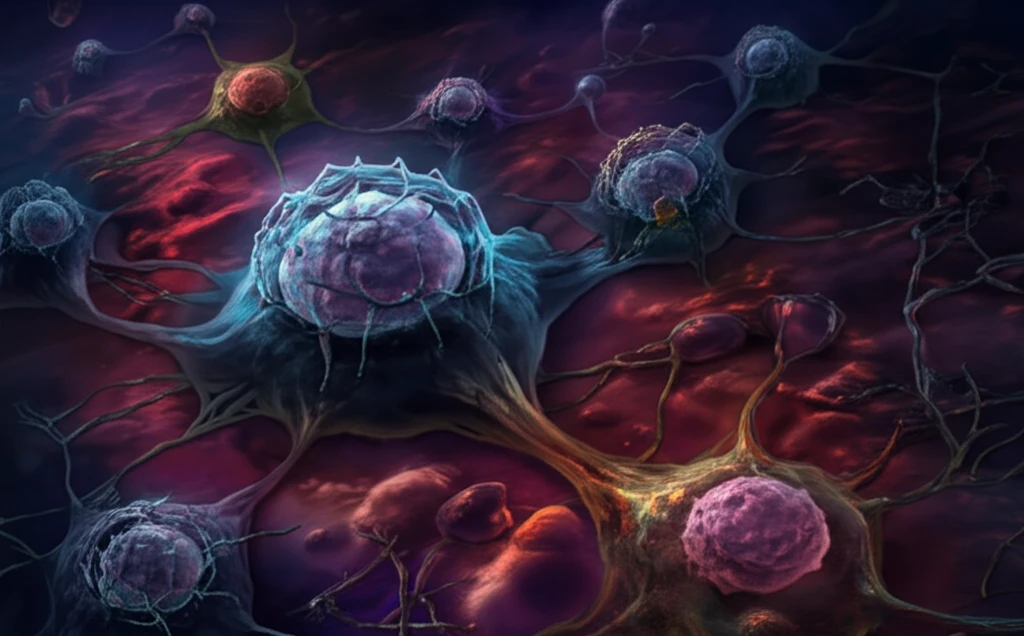
Cell Therapy: Revolutionizing the Future of Cancer Treatment
"Explore how innovative cell therapy strategies, including NK cells and CAR-T cells, are transforming immunotherapy and offering new hope for patients with acute myeloid leukemia (AML)."
Acute myeloid leukemia (AML) poses significant treatment challenges, especially for elderly patients who often exhibit resistance to standard chemotherapy or experience early relapse. This highlights the urgent need for innovative immunologic approaches that can overcome these limitations and improve patient outcomes. Cell therapy, a rapidly evolving field, offers promising strategies that harness the power of the body's own immune system to fight cancer.
Traditional treatments like chemotherapy and radiation can be effective, but they often come with harsh side effects and may not be sufficient to eliminate the disease entirely, particularly in high-risk patients. Immunotherapy, on the other hand, aims to stimulate the immune system to recognize and destroy cancer cells. Cell therapy, a subset of immunotherapy, involves modifying immune cells in the laboratory to enhance their ability to target and kill cancer cells before infusing them back into the patient.
While strategies like vaccines and monoclonal antibodies have shown some promise in treating AML, cell therapy is emerging as a particularly compelling approach. It offers the potential for more targeted and personalized treatments that can overcome the limitations of traditional therapies and improve long-term outcomes. This article explores the exciting advancements in cell therapy for AML, focusing on the potential of natural killer (NK) cells, CAR-T cells, and other innovative strategies to revolutionize cancer immunotherapy.
Unlocking the Potential of Natural Killer (NK) Cells in AML Treatment

Natural killer (NK) cells are a type of immune cell that plays a crucial role in the body's defense against cancer. Unlike T cells, which need to be activated by specific antigens, NK cells can recognize and kill tumor cells without prior sensitization. This makes them an attractive option for cell therapy in AML, where rapid and effective elimination of leukemia cells is essential.
- Enhanced GVL Effect: NK cells boost the donor's immune response against leukemia cells.
- In Vivo Expansion: Adoptively transferred NK cells can multiply within the patient, sustaining their anti-leukemic activity.
- KIR Ligand Mismatch: Utilizing NK cells from donors with KIR ligand mismatches can further enhance their effectiveness.
The Future of Immunotherapy in AML
Cell therapy holds immense promise for improving outcomes in AML, particularly for elderly patients and those with poor prognoses. Strategies involving NK cells, CAR-T cells, and other innovative approaches offer the potential for more effective, less toxic treatments that can improve survival rates and quality of life. As research continues and these therapies become more refined, cell therapy is poised to play a central role in the future of AML treatment, offering new hope for patients and transforming the landscape of cancer immunotherapy.
